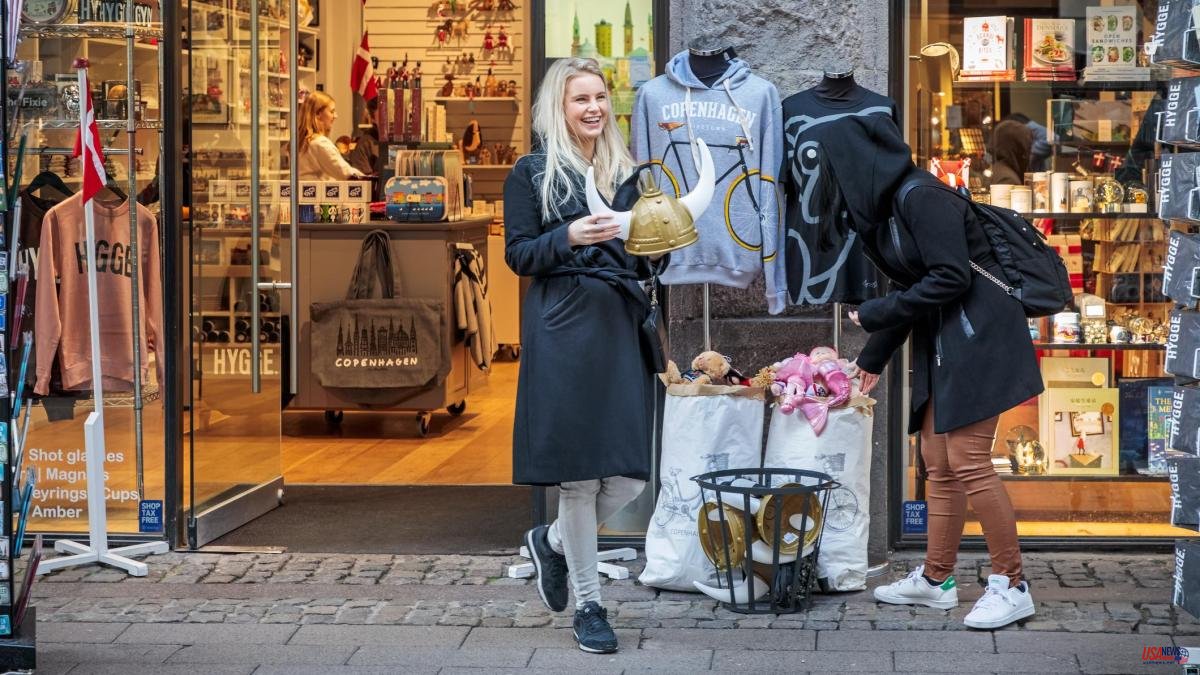Hygge is a Danish word that is difficult to translate. It refers to a very specific concept of happiness, coined by themselves and which is supposed to turn homes into warmer places and provide citizens with an extra dose of happiness. According to the Global Happiness Index 2023, prepared annually by the United Nations, Denmark ranks second in the world ranking, only behind Finland. It is also said that it is one of the friendliest and most respectful societies in the world, with much less profound social differences than other European neighbors and having been a pioneer in the application of anti-discrimination policies.
In spite of everything, the smiles that the Danes draw today have a much more warlike origin than one might imagine. And it is that as a Scandinavian society -along with Sweden, Norway, Iceland and Greenland-, their ancestors are neither more nor less than what we know today as Vikings. There are hardly any similarities between the wild and conquering character that comes to us today from that civilization that occupied the same territory more than 1,000 years ago, with the benevolence one finds when visiting any place in this small country equivalent to the size of Extremadura.
In addition to the dreamy villages and the most innovative Copenhagen, the route through the villages that still preserve the Viking essence is a must if you have a few extra days to tour the country. Here we leave you some of the cultural treasures that keep the vestiges of a legendary civilization.
Located in the region of Central Jutland (the great Danish peninsula), it is known for its burial mounds and runestones erected by one of the most famous kings in the country's history: Harald Bluetooth (yes, from him comes the current word for call the famous data delivery system).
Dating back to the 10th century, these rocks are considered one of the earliest examples of runic writing and are considered one of the most important historical relics in all of Scandinavia. In fact, they are part of the Unesco world heritage, and just opposite is an interactive museum of the Viking age that has won several international awards for its innovative and immersive nature.
This is the oldest village in all of Denmark. In its streets, the calm and warmth of contemporary Danish society is mixed with buildings from all eras. The cathedral, located in the historic center, is one of the emblems of Ribe. Around it stretch cobbled streets lined with breweries and restaurants with meticulously preserved facades.
The city, which owes its origin to the Viking people, also has the spectacular gardens of the Ribe Kloster, the church of Santa Catalina and the iconic Torvet street. The Dagmar hotel is one of the best options if you are looking for original and well-located accommodation.
Also located in Jutland -in the northernmost part-, this town is home to the oldest circular Viking fort in the country. The wall, built in a round shape, is surrounded by a moat and has four impressive paths arranged in the shape of a cross that converge in the center of the fortress.
The construction of the fortification dates back to the year 980, although historians believe that a previous settlement existed even earlier. On the shores of the Limfjord, a 180-kilometre-long strait that divides Jutland from the island of Vendsyssel-Thy, Aggersborg boasts spectacular views. In addition to the impressive archaeological site, if there is an opportunity it is highly recommended to take one of the hiking trails that border the area, very pleasant and with hardly any unevenness.
Strong winds hit this small enclave just 30 kilometers from Copenhagen -on the island of Zealand-. History is breathed in each and every one of its streets. Although it is the best known -again, a Unesco world heritage site-, Roskilde Cathedral deserves a mandatory stop. And it is that in this striking building built with red brick are the graves of most of the kings and queens of Denmark.
On the seashore is the Rosklide Viking Ship Museum, which, in addition to displaying an impressive collection of ships that perfectly imitate those of the period, exhibits the remains of five original ships that were discovered in the city's fjord itself. Part of the exhibition is outdoors, so it can be visited at any time.
At the end of June, the Roskilde festival is held, a music event that has been organized since the 1970s and that brings together thousands of fans of the most famous groups in the world every year.
Hometown of the writer Hans Christian Andersen, this city is located right in the center of the island of Fyn -halfway between Jutland and Zealand-. In addition to being a living museum of one of the most famous writers in history -from his pen were born the children's stories of The Little Mermaid, The Ugly Duckling or The Emperor's New Clothes-, which was the largest city in Denmark in the 18th century has an important Viking remnant.
With more than a thousand years of history, it has Viking fortresses of great historical value such as Nonnebakken or the incredible Vikingemuseet Ladby museum -suitable for children and adults-, in the city of Kerteminde, less than 20 minutes away by car.
Of the many green spaces in the city, the Munke Mose Park should be highlighted. The site is home to an eight kilometer canal that can be navigated by boat, along which Scandinavian men and women built various fortifications to defend themselves against constant enemy attacks.
One of the most curious and least known facts about the smallest of the Scandinavian countries is that it has the oldest national flag in the world. It is officially called Danneborg -which means flag of the Danes- and dates from the year 1219. It has been the point of reference for many other flags such as the Norwegian, Swedish, Finnish or Icelandic.













